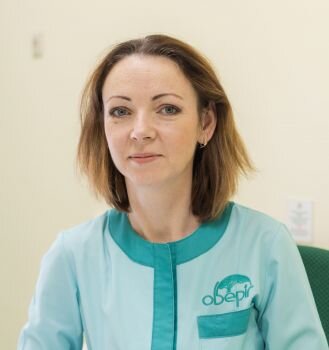Women's Health Center (Gynecology and Obstetrics)
Our goal is to provide accurate diagnosis and choose the optimal evidence-based treatment for women with gynecological and oncological diseases.
We provide all types of medical care to women of all ages with the main focus on the quality of everyday life and preservation of reproductive function.
For diagnostic and treatment purposes, the most modern equipment, instrumental and laboratory methods are used: gynecological examination, colposcopy, ultrasound (including vaginal probes), computer tomography (CT), MRI, hysteroscopy (modern endoscopic technology allows for examination of the cavity uterus even for women who have not yet given birth, because we use the thinnest hysteroscopes with ultra-high image clarity). In the clinic's own pathogistological laboratory, cytological studies, studies of biopsies and neoplasms removed during surgery are carried out.
The Center's team consists of obstetrician-gynecologists and oncogynecologists who provide assistance to women of various age categories, including childhood and adolescence.
The head of the Women's Health Center, Volodymyr Lishchuk, is a candidate of medical sciences, an honored doctor of Ukraine, a gynecologist with over 30 years of experience. He is a recognized expert in the treatment of endometriosis, but his professional interests are not limited to this: various pathologies of the organs of the female reproductive system, minimally invasive interventions, treatment of infertility and other types of gynecological diseases - all this is the area of high professionalism of Volodymyr Danylovych. The team includes experienced gynecologists, candidates of medical sciences (Anna Novosad, Lyudmila Yashchenko), gynecologist Lyudmila Kovalchuk with more than 12 years of experience, as well as talented gynecologist with 5 years of experience Yana Voshkulat.
A distinctive feature of the Women's Health Center in our clinic is a multidisciplinary approach, which involves the involvement of related specialists - urologists, endocrinologists, psychologists, cardiologists and other narrow specialists if necessary.
Attentive and careful treatment of women, adherence to the best global standards in diagnosis and treatment, use of evidence-based medicine methods in the treatment of diseases of the female reproductive system - all these are the cornerstones of the work of the doctors of the Center for Women's Health.
We treat exclusively in accordance with international standards for the provision of gynecological, oncogynecological and obstetric care and do not prescribe treatment if, according to international standards, the condition does not require medical or surgical intervention (such as detection of ureaplasma or mycoplasma in vaginal smears).
We guarantee infection safety for patients during any diagnostic or treatment procedures, because we ensure flawless sterilization of instruments and cleanliness of staff's hands, premises and contact surfaces. During the procedures, disposable instruments are used, and those instruments and equipment, which are subject to repeated use, undergo several stages of processing (washing, high-level disinfection, batch sterilization) and have automated sterilization quality control. We also strictly adhere to the rules of confidentiality of patients' personal information and reliably protect data from third-party access.
Oncogynecology
General gynecology
Pregnancy management
Minimally invasive surgery
Intrauterine endoscopic surgery
Endometriosis treatment
Gynecological endocrinology
Emergency gynecology
 Lishchuk Volodymyr
Lishchuk Volodymyr
- Gynecologist
- Head of the Women's Health Center
- 40 years of medical experience
- PhD in Medical Sciences
- Honored Doctor of Ukraine
- Careful and caring attitude of doctors towards women, understanding of their needs.
- Use of modern, evidence-based methods of diagnosis and treatment.
- A multidisciplinary approach to the treatment of gynecological and obstetric pathologies.
- High quality medical care that meets world standards.
- All types of care for women of any age - from children's to postmenopausal.
- Guarantees of infectious safety during medical and diagnostic procedures.







